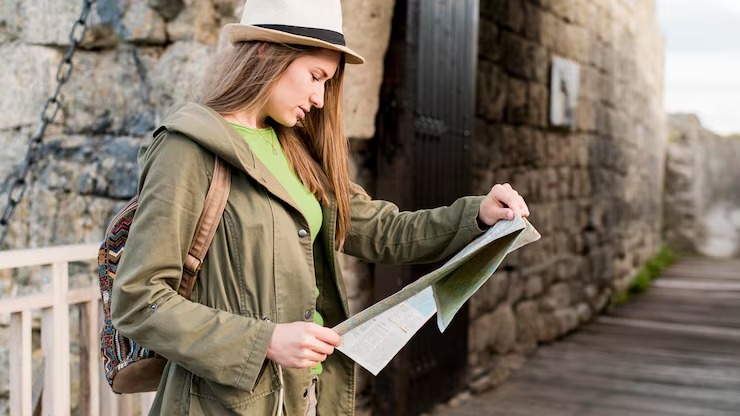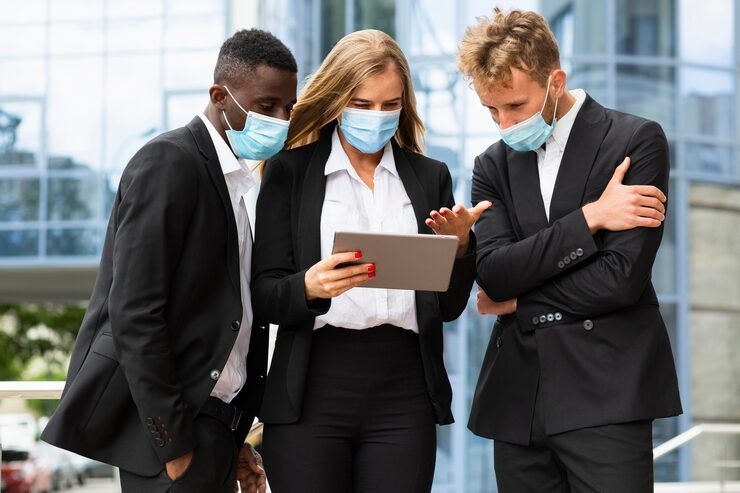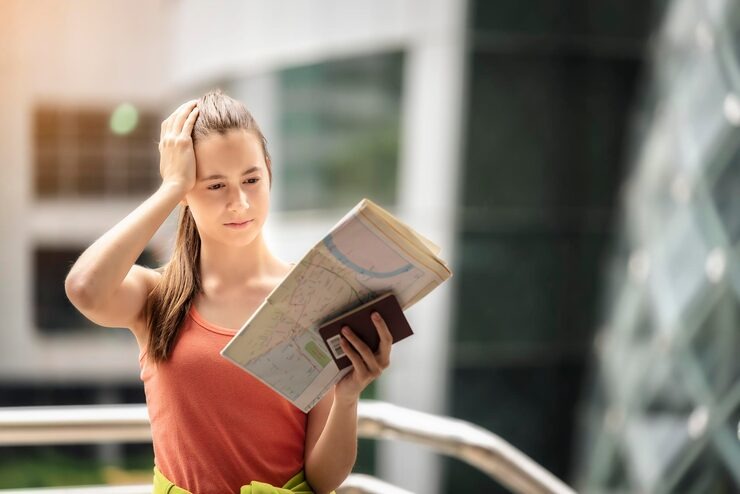Traveling is like stepping into a new chapter of a book—you’re excited, curious, and maybe a little nervous about what’s around the next page. Whether you’re backpacking through Europe, exploring ancient ruins in South America, or taking a family vacation to a tropical paradise, safety is the foundation of a memorable trip. I’ve been fortunate to wander through over 20 countries, from bustling markets in Morocco to serene beaches in Thailand, and I’ve learned a thing or two about staying safe—sometimes the hard way. In this guide, I’ll share my top 10 tips to help you travel securely, blending practical advice with real-world stories to keep you prepared and confident. Let’s dive into how you can protect yourself, your belongings, and your peace of mind while exploring the world.
Why Travel Safety Matters
Safety isn’t just about avoiding danger; it’s about ensuring you can fully embrace the joy of travel without worry. From pickpockets in crowded cities to unexpected health issues abroad, being prepared allows you to focus on the experience. This article draws from my own travels, expert advice, and trusted resources to give you actionable steps for a secure journey.
Tip 1: Research Your Destination Thoroughly
Before you even pack your bags, dive deep into understanding your destination. Knowing the local culture, laws, and potential risks can make or break your trip. When I visited Istanbul, I learned that haggling in markets is expected, but flashing cash can attract unwanted attention. Research saved me from a rookie mistake.
How to Research Effectively
Start with official sources like the U.S. Department of State’s Travel Advisories or the CDC’s health guidelines for travelers. These provide up-to-date information on safety risks, visa requirements, and health precautions. For example, checking Travel.State.gov helped me avoid a scam in Thailand where fake “tourist police” demanded fines.
- Check Travel Advisories: Look for warnings about crime, political unrest, or natural disasters.
- Understand Local Customs: Dress codes or gestures can differ significantly—ignorance can make you a target.
- Learn About Scams: Search “destination + tourist scams” to stay one step ahead of common tricks.
Tools for Destination Research
| Tool | Purpose | Where to Access |
|---|---|---|
| Travel.State.gov | Travel advisories and visa info | travel.state.gov |
| CDC Travelers’ Health | Health risks and vaccine advice | wwwnc.cdc.gov |
| Google Maps | Scout neighborhoods and safety | maps.google.com |
Tip 2: Share Your Itinerary with Trusted Contacts
Letting someone know where you’ll be is like leaving a trail of breadcrumbs—it’s a simple way to ensure help can find you if needed. On a solo trip to Peru, I shared my Machu Picchu itinerary with my sister. When I lost cell service, she knew exactly where I was and didn’t panic.
How to Share Your Plans
Email a detailed itinerary to a family member or friend, including flight details, accommodation addresses, and planned activities. Apps like Google Maps or Find My Friends let you share your live location for extra security. Always check in daily to confirm you’re safe.
- Include Key Details: Share flight numbers, hotel names, and emergency contacts.
- Use Technology: Apps like WhatsApp or Life360 allow real-time updates.
- Set a Check-In Schedule: Agree on daily or weekly updates to reassure loved ones.
Tip 3: Secure Your Valuables
Your passport, cash, and phone are your lifelines abroad—losing them can turn a dream trip into a nightmare. In Rome, I once saw a tourist’s backpack swiped while they were distracted by a street performer. A few simple precautions can protect your essentials.
Best Practices for Valuables
Invest in a money belt or anti-theft bag with slash-proof straps and RFID blockers. Keep your passport in a hotel safe and carry a digital copy on your phone. I use a hidden pouch under my clothes for cash and cards—it’s not glamorous, but it works.
- Use a Money Belt: Stash cash and cards close to your body.
- Lock Up Valuables: Use hotel safes or hostel lockers (bring your own padlock).
- Digital Backups: Store scans of your passport and IDs in a secure cloud service.
Pros and Cons of Anti-Theft Gear
| Gear | Pros | Cons |
|---|---|---|
| Money Belt | Discreet, secure | Can be uncomfortable |
| Anti-Theft Bag | Stylish, functional | More expensive |
| RFID Wallet | Blocks identity theft | Limited space |
Tip 4: Stay Connected with a Local SIM or VPN
Staying connected isn’t just about posting selfies—it’s about having access to maps, emergency services, and translation apps. In Japan, I bought a local SIM card for $20, which saved me when I got lost in Tokyo’s maze-like streets.
Choosing Between SIM Cards and VPNs
A local SIM card ensures reliable data for navigation and communication. Alternatively, a VPN protects your data on public Wi-Fi, which is notorious for hackers. I use NordVPN for secure browsing in cafes and airports—it’s a small price for peace of mind.
- Local SIM: Check if your phone is unlocked before traveling.
- VPN Services: NordVPN or ExpressVPN offer secure connections.
- Avoid Public Wi-Fi: Unless using a VPN, steer clear of unsecured networks.
Tip 5: Trust Your Instincts
Your gut is your best travel companion. If a situation feels off, it probably is. In a crowded market in Delhi, I sensed someone following me and quickly ducked into a shop. Trusting my instincts helped me avoid a potential pickpocket.
How to Hone Your Intuition
Pay attention to your surroundings and avoid distractions like headphones in unfamiliar areas. If someone or something feels suspicious, remove yourself calmly. Your subconscious often picks up on cues your conscious mind misses.
- Stay Alert: Avoid zoning out in crowded or unfamiliar places.
- Act Confidently: Looking lost can make you a target.
- Have an Exit Plan: Know where to go if you feel unsafe.
Tip 6: Choose Safe Transportation
From taxis to public transit, how you get around can impact your safety. In Mexico City, I learned to use Uber instead of hailing street taxis after hearing about overcharging scams. Researching transport options beforehand is key.
Safe Transportation Options
Use reputable ride-sharing apps like Uber or Bolt, which track drivers and routes. For public transit, stick to official apps or schedules and avoid traveling alone late at night. Always negotiate taxi fares in advance if there’s no meter.
- Research Providers: Check reviews for taxis or buses before booking.
- Use Apps: Apps like Citymapper help navigate public transit safely.
- Stay Visible: Choose well-lit, busy areas for boarding or alighting.
Comparison of Transport Options
| Option | Safety Level | Cost | Availability |
|---|---|---|---|
| Uber/Bolt | High | Moderate | Most cities |
| Public Transit | Medium | Low | Varies |
| Street Taxis | Low | Varies | Widespread |
Tip 7: Be Cautious with Food and Drink
Food poisoning or drink tampering can derail your trip faster than you can say “street food.” In Bali, I learned to stick to bottled water after a bout of traveler’s diarrhea—lesson learned.
Food and Drink Safety Tips
Only consume sealed bottled drinks and avoid ice in areas with questionable water quality. Research local cuisine to know what’s safe to eat. If a drink tastes off, don’t drink it—better safe than sorry.
- Check Seals: Ensure bottles are unopened before drinking.
- Eat at Busy Spots: Popular restaurants are less likely to serve spoiled food.
- Carry Sanitizer: Use it before eating if soap isn’t available.
Tip 8: Blend In with Locals
Looking like a tourist can make you a target for scams or theft. In Paris, I swapped my bright sneakers for neutral shoes and avoided pulling out a map in public. Blending in made me feel less vulnerable.
How to Blend In
Research local dress codes and avoid flashy clothing or accessories. Learn a few basic phrases in the local language—it shows respect and helps you navigate better. Act like you know where you’re going, even if you’re slightly lost.
- Dress Appropriately: Avoid logos or touristy attire.
- Learn Key Phrases: “Hello,” “thank you,” and “help” go a long way.
- Use Digital Maps: Glance at your phone instead of a paper map.
Tip 9: Get Travel Insurance
Travel insurance is your safety net for unexpected mishaps. When I sprained my ankle hiking in New Zealand, my insurance covered the medical visit, saving me hundreds of dollars. It’s worth every penny.
Choosing the Right Insurance
Look for policies covering medical emergencies, trip cancellations, and lost belongings. Companies like SafetyWing or World Nomads offer flexible plans for travelers. Compare options to find the best fit for your trip.
- Check Coverage: Ensure it includes health, theft, and cancellations.
- Read Reviews: Sites like Trustpilot can guide your choice.
- Keep Docs Handy: Store policy details digitally and physically.
Top Travel Insurance Providers
| Provider | Coverage | Best For |
|---|---|---|
| SafetyWing | Health, theft, delays | Digital nomads |
| World Nomads | Adventure activities | Active travelers |
| Allianz | Comprehensive plans | Families |
Tip 10: Know Emergency Contacts
Having emergency numbers at your fingertips can be a lifesaver. In Brazil, I memorized the local equivalent of 911 and my embassy’s number. It gave me confidence knowing help was a call away.
Building Your Emergency List
Save local emergency numbers (police, ambulance) and your country’s embassy contact in your phone. Register with programs like STEP (Smart Traveler Enrollment Program) for U.S. citizens to receive alerts and assistance.
- Save Numbers: Store them in your phone and on paper.
- Register with STEP: Get alerts from the U.S. embassy.
- Know Local 911: Each country has its own emergency number.
People Also Ask (PAA)
How Can I Stay Safe While Traveling Alone?
Solo travel is empowering but requires extra caution. Share your itinerary, stick to well-lit areas, and avoid sharing your plans with strangers. Apps like bSafe can send alerts to contacts if you’re in trouble.
What Should I Do If I Get Lost Abroad?
Stay calm, find a safe spot like a cafe, and use a map app or ask a trusted local for directions. Having your accommodation’s address written in the local language helps. Always carry a backup power bank for your phone.
Are There Apps to Help with Travel Safety?
Yes, apps like TripWhistle (emergency numbers worldwide), bSafe (personal safety alerts), and GeoSure (neighborhood safety ratings) are excellent tools. Download them before your trip for easy access.
How Do I Avoid Scams While Traveling?
Research common scams for your destination using sites like TripAdvisor or travel blogs. Be wary of overly friendly strangers, fake tour guides, or “free” offers. Always verify services through official channels.
FAQ Section
What is the most important travel safety tip?
Researching your destination is crucial. Understanding local risks, customs, and scams helps you avoid trouble and travel confidently. Start with trusted sources like government travel advisories.
Where can I get reliable travel safety information?
Websites like Travel.State.gov, CDC.gov, and travel blogs like Nomadic Matt offer reliable advice. Local embassy websites also provide country-specific safety tips.
What are the best tools for staying safe while traveling?
Anti-theft bags, money belts, VPNs, and apps like bSafe or GeoSure are top tools. Travel insurance from providers like SafetyWing adds an extra layer of protection.
How do I protect my passport while traveling?
Keep your passport in a hotel safe or hidden money belt. Carry a digital and physical copy separately. If lost, contact your embassy immediately for a replacement.
Is it safe to use public Wi-Fi while traveling?
Public Wi-Fi can be risky due to hackers. Use a VPN like NordVPN to encrypt your data, and avoid accessing sensitive accounts like banking on unsecured networks.
Conclusion: Travel Smart, Stay Safe
Traveling is about creating memories, not stress. By researching your destination, securing your valuables, staying connected, and trusting your instincts, you can explore the world with confidence. My travels have taught me that preparation is the key to freedom—whether I’m navigating Tokyo’s subway or hiking Peru’s Andes. Use these 10 tips, from choosing safe transport to getting travel insurance, to ensure your adventures are safe and unforgettable. Ready to plan your next trip? Check out resources like Travel.State.gov or SafetyWing to get started. Safe travels!




